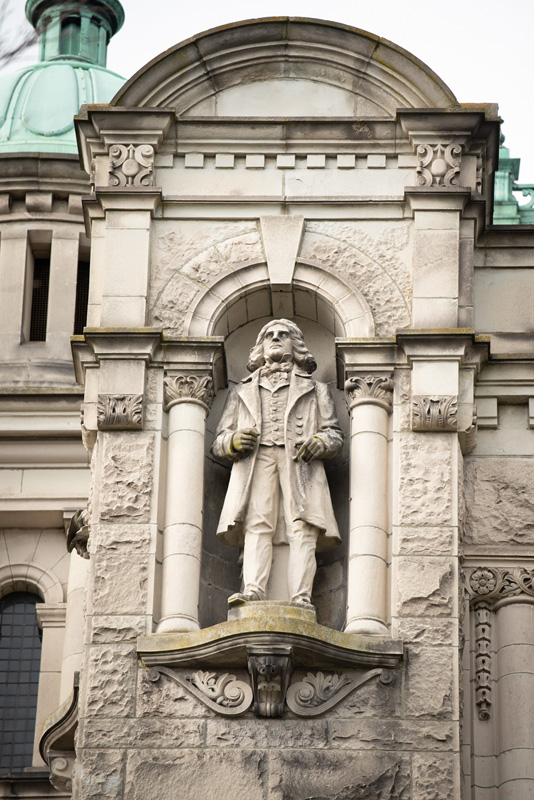Along the exterior of the Legislative Library are 14 statues of individuals who held prominence in the earlier history of the territory now known as British Columbia. One of those statues depicts Dr. John McLoughlin.
Born on October 19, 1784, in La Rivière du Loup, Quebec, John McLoughlin was responsible for overseeing Hudson’s Bay Company (HBC) operations in the Columbia River region during a tenuous period of British-American conflict over the Pacific Northwest. His career did not begin in the fur trade. McLoughlin received his license to practice medicine and surgery at age 19, after which he was hired by the North West Company as a physician and surgeon. It was soon recognized that McLoughlin’s talent went beyond medicine and, in 1814, he was made a partner in the Hudson Bay Company and quickly rose through its ranks. McLoughlin was instrumental in the merger of the Hudson’s Bay and North West companies, resulting in his appointment as the Chief Factor for the HBC west of the Rocky Mountains.
As Chief Factor, McLoughlin ordered the establishment of Fort Vancouver on the Columbia River and refused to recognize any claims made by American settlers north of the river (going as far as tearing down an American cabin built north of Fort Vancouver). Despite his tough stance against American settlement, McLoughlin earned the respect of American settlers in the area through his support for an independent Oregon territory and his disregard for orders to cut off aid to malnourished American settlers, likely preventing an armed revolt against British settlers in the same region. Under McLoughlin’s direction, James Douglas, then an HBC trader, established Fort Victoria on Vancouver Island in 1843, solidifying the British Empire’s presence along the west coast. Dr. John McLoughlin died on September 3, 1857, in Oregon City, where he remains buried.

